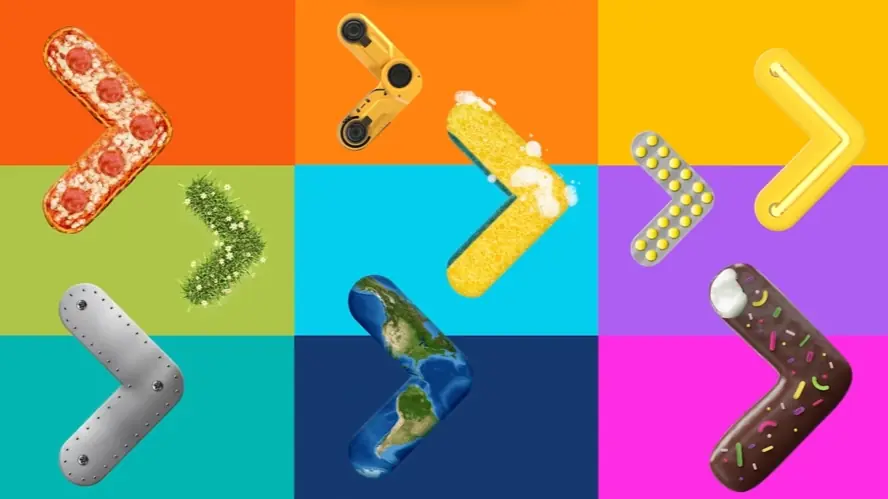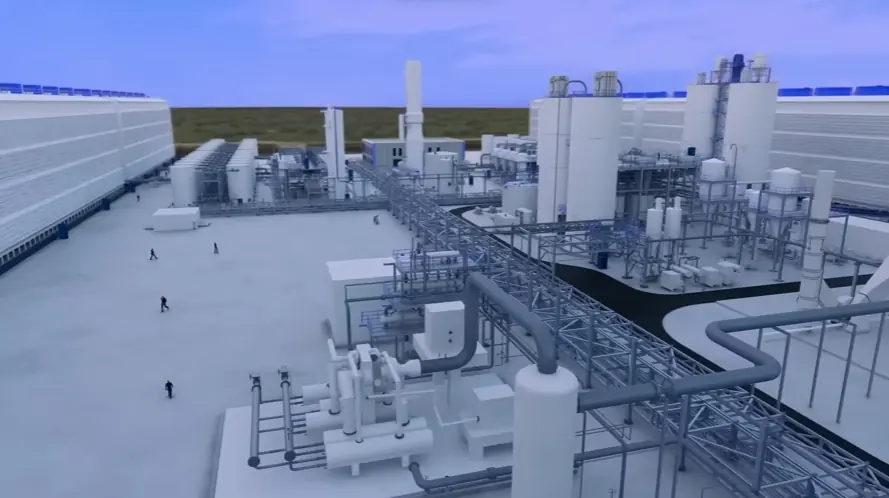Deep Dive into 3D Visualization Techniques
Exploring the frontier of computer graphics reveals intricate techniques powering modern visual experiences. Beyond basic creation, a deep dive into 3D visualization involves specialized approaches tailored for diverse applications. They move beyond simply building models to simulating complex phenomena and creating interactive, lifelike digital environments. This requires mastering subtle details that transform static scenes into dynamic realities.
Scientific and medical fields extensively leverage these techniques. 3D graphics simulate intricate biological processes like molecular dynamics, offering profound insights into microscopic worlds. Ecologists use them to model complex ecosystem dynamics, broadening understanding at a larger scale. These visualizations act as crucial bridges, translating complex data into accessible formats for researchers and the public alike, enabling deeper comprehension of phenomena from cellular structures to cosmic events.
Industrial sectors utilize advanced 3D animation to clarify complex machinery and processes. Breaking down intricate systems into visually engaging animations bridges the gap between technical knowledge and broader understanding. Compared to static diagrams, animated visuals are significantly more engaging and memorable, aiding in training, product demonstrations, and sales pitches by condensing detailed information into impactful formats.
Mastering realistic textures involves high-quality maps and proper uv mapping, adding depth and authenticity to digital surfaces.
Physics simulations mimic real-world laws, allowing objects and environments to interact naturally for dynamic, realistic motion.
AI is increasingly automating tasks like model generation and lighting, enhancing realism and streamlining production workflows.
Optimization techniques like reducing polygon count are crucial for smooth performance in interactive applications like ar and vr experiences.
These techniques, fundamental to creating a compelling 3D Animated Visualization Video, push the boundaries of what's possible in digital representation, bringing complex ideas to vivid, understandable life.
Why Advids for 3D Animated Visualization Video?
At Advids, we specialize in crafting high-quality, original 3D Animated Visualization Videos that elevate your brand and drive results. Our unique blend of creative storytelling, cutting-edge technology, and a proven track record ensures your vision transforms into a compelling and effective animation.
Transforming Ideas into Engaging 3D Animated Experiences:
Customized 3D Animated Visualization Video Solutions: From explainer videos and product demos to architectural walkthrough s and character animations, we tailor each project to your specific needs, brand, and target audience.
Creative Storytelling Through Animation: Our talented team of animators and storytellers craft captivating narratives that resonate with viewers and inspire action.
Cutting-Edge 3D Animated Visualization Video Technology: We utilize industry-leading software and techniques to create visually stunning videos that leave a lasting impression.
A Legacy of Success and Client Satisfaction:
12+ Years of Proven Success: With over 3400 successful projects completed, we possess a deep understanding of what makes a 3D Animated Visualization Video truly effective. Over 315 of these projects are specifically focused on 3D Animated Visualization Videos.
Trusted by Industry Leaders: Brands like Razorpay, Ola, Mercedes, the United Nations, Continental, and Mercer rely on our expertise to bring their stories to life through powerful 3D animation.
Client Satisfaction Guaranteed: Our commitment to excellence is reflected in over 109 five-star Google reviews, showcasing our talent, creativity, and dedication to client satisfaction.
A Collaborative Journey from Concept to Completion:
Collaborative Process: We work closely with you throughout the entire process, from initial concept to final delivery, ensuring your vision is accurately represented in the final animation.
Strategic Communication: Open and transparent communication is paramount. We prioritize understanding your needs, target audience, and brand identity to create impactful 3D Animated Visualization Videos.
Ready to unlock the potential of 3D Animated Visualization Video for your business with the latest video design trends of 2024? Let Advids be your trusted partner in transforming your ideas into engaging and effective animated experiences.
Checkout some of the projects and work our team at Advids has been producing:
What is a 3D Animated Visualization Video?
A 3D animated visualization video is a type of video that uses computer-generated imagery (CGI) to create three-dimensional moving images. It's a powerful tool for bringing ideas, products, or concepts to life in a visually engaging and informative way. Unlike traditional animation, which often relies on hand-drawn or stop-motion techniques, 3D animation allows for greater realism, flexibility, and control over the final product.
These videos are commonly used in various industries for marketing, education, and entertainment purposes. For example, businesses use them to showcase products, explain complex processes, or create compelling brand stories. Architects and designers use them to visualize building designs and interior spaces. Educators use them to illustrate scientific concepts or historical events. The possibilities are virtually limitless, making 3D animated visualization videos a valuable asset for communication and storytelling across diverse fields.
What do top 3D Animated Visualization Videos have in common?
Mastering these elements ensures your 3D animation video captivates and converts viewers.
Clear Project Vision: Precisely define the video's purpose and key takeaways to maintain focus. Best practice: Start with a detailed script outlining the core message and desired impact.
- ideal customer profile : Target specific viewer needs and preferences to resonate emotionally. Best practice: Create detailed buyer personas to inform design choices and messaging.
- Visual Storytelling: craft a narrative that emotionally connects with the audience, building anticipation and payoff. Best practice: Use metaphors and analogies to explain complex concepts simply.
- Narrative Structure: Employ a three-act structure (setup, confrontation, resolution) for a satisfying viewing experience. Best practice: Use clear transitions between scenes to maintain flow and clarity.
- High-Fidelity 3D Models: Use high-polygon models and detailed textures for photorealistic results. Best practice: Employ realistic materials and shaders to enhance visual fidelity.
- Fluid Animation: Use keyframing and motion blur for smooth, believable movement. Best practice: Maintain consistent frame rates and avoid jerky movements.
- Strategic Camera Movement: Use dynamic camera angles and movements to emphasize key details and create visual interest. Best practice: Plan camera shots meticulously to guide the viewer's attention.
- High-Resolution Textures: Use high-resolution textures to add realism and detail to the 3D models. Best practice: Use normal maps and other texture techniques to enhance visual detail.
- Dynamic Lighting: Use lighting to create mood, highlight key features, and enhance depth. Best practice: Use a variety of light sources to create a realistic and visually appealing scene.
- Brand Identity: Maintain consistent branding throughout the video to reinforce recognition. Best practice: Use consistent color palettes, fonts, and logos to create a cohesive brand experience.
What makes 3D Animated Visualization Video effective?
High-fidelity visuals, showcasing meticulous detail and realistic textures, establish credibility. Narratives driven by clear cause-and-effect relationships, culminating in a satisfying resolution, maintain engagement. A consistently reinforced core message ensures memorability and clarity of purpose. Immediate comprehension and lasting resonance are paramount for effective communication.
Strategic camera work guides the viewers gaze, emphasizing key elements and creating visual interest. Seamless integration of interactive elements, relevant to the target audience, fosters active participation. Deep audience understanding informs impactful creative decisions, aligning the video with viewer expectations. Quantifiable metrics, such as brand lift, lead generation, and return on investment, demonstrate effectiveness.
Compelling data visualization techniques clarify complex information and enhance understanding. Effective 3D animation achieves clarity, memorability, and engagement, driving desired outcomes.
How long should your 3D Animated Visualization Video be?
Mastering 3D animation video length hinges on aligning video style, target audience, and marketing goals for optimal impact.
Pre-production Considerations for Determining Video Length:
- What's the product's core message?
- Who is the intended viewer?
- How many key features are shown?
- What style best suits the product?
- Which platform will host the video?
- Does the style match the product?
- What's the marketing objective?
3D animated visualization video length guide
| 3D Animated Visualization Types | Video Length | Use Case | Funnel |
|---|
| Realistic Style | 1-2 minutes | Showcase complex product features with photorealistic detail Ideal for high-end products needing visual impact | Awareness |
| Cartoon Style | 30-60 seconds | Explain complex concepts simply and engagingly, targeting a broad audience, especially children or casual viewers. | Consideration |
| Stylized Realism | 45-75 seconds | Balance realism with artistic flair, suitable for showcasing products with unique design elements, using a blend of realistic and stylized elements | Conversion |
| Motion Graphics Explainer Video | 15-30 seconds | Concisely communicate key information, ideal for social media or short-form video platforms, often using flat design or minimal style | Engagement |
| Architectural Style | 1-2 minutes | Immersive walkthroughs of buildings or spaces, ideal for real estate, architecture firms, or interior design projects, often using realistic or stylized realism | Decision |
How to create 3D Animated Visualization Videos?
Mastering 3D animated visualization videos requires a strategic approach, focusing on impactful storytelling and compelling visuals from the initial concept to the final render.,,
* Concept Design - Focus on a clear, concise message; avoid ambiguity.- Script Outline - Prioritize a strong narrative arc that keeps viewers engaged.
- Storyboard Layout - Use dynamic camera angles to enhance visual interest and clarity.
- Style Guide Creation - Maintain consistency in visuals to create a professional look.
- Character Modeling - Design memorable characters that resonate with the target audience .
- Environment Building - Create immersive environments that enhance the visualization's impact.
- 3D Model Creation - Use high-polygon models for detail and realism; optimize for performance.
- Texture & Shading - Employ advanced shading techniques to create depth and realism.
- Animation Process - Use subtle animation to create believable and engaging movements.
- Lighting Setup - Use lighting to guide the viewer's eye and emphasize key elements.
- VFX Compositing - Use VFX sparingly, only to enhance the visualization, not distract from it.
- Final Rendering - Optimize rendering settings for high-quality visuals without compromising speed.
Measuring the ROI of 3D Animated Videos
Let's shift gears and explore how to measure the success of our 3D animated videos. After all, crafting captivating visuals is only half the battle; understanding their impact is crucial. We'll delve into practical strategies to gauge return on investment and overall effectiveness. Remember, high-quality CGI animation examples can significantly impact brand perception and drive conversions, so measuring their success is paramount.
Measuring the ROI of animated marketing videos requires a comprehensive approach. It's not just about vanity metrics; we need to understand how our videos contribute to business goals . Think of it like cooking – we don't just want a visually appealing dish; we want it to taste delicious too. Similarly, our videos need to both captivate and convert. When analyzing competitor benchmarking , studying the best 3D animation video examples can provide valuable insights into successful strategies.
- Define Key Performance Indicators: Start by identifying specific metrics aligned with your video's objectives. Are we aiming for increased brand awareness or lead generation? Perhaps our goal is to boost sales conversions .
- Website Analytics: Dive into website traffic, bounce rates, and time spent on pages linked to your video. This data offers a glimpse into viewer behavior and engagement.
- Social Media Engagement: Monitor likes, shares, comments, and reach on social media platforms. These metrics reflect audience interest and the video's viral potential. For businesses targeting younger audiences, 3D character animation video examples can be particularly effective in driving engagement.
- A/B Testing: Just like trying different recipes, compare different video versions to identify optimal elements for engagement. This helps refine video content for maximum impact.
By consistently tracking these metrics, we gain valuable insights into our video's performance and can refine our strategies for even greater success. Remember, measurement is key to maximizing the impact of our 3D animated video endeavors.
The 3D Animation Production Process
Having explored the core principles, let's delve into the practical steps involved in crafting compelling 3D animation. This journey takes us from initial brainstorming to polished final product, transforming ideas into captivating visuals. Think of it as building a house – we need a solid foundation and careful planning before we add the finishing touches.
We begin with refining our initial concept, ensuring a crystal-clear message and target audience. This sets the stage for a compelling narrative, crafted through script development. Storyboarding then translates the script into visual sequences, planning camera angles and transitions. A defined style guide ensures visual consistency, much like a conductor leading an orchestra.
- 3D Modeling: This is where we build the foundation, creating detailed assets for characters and environments. For 3D product animation video examples, this stage is crucial for showcasing intricate details .
- Texturing and Shading: Adding textures and shaders brings our models to life, enhancing realism and visual appeal. Think of it as adding the paint and wallpaper to our house.
- Animation and Rigging: Rigging prepares our models for movement, while animation breathes life into them. In 3D animation video examples for software, this process often focuses on demonstrating functionality.
- Lighting, Rendering, and Compositing: Lighting sets the mood and highlights key elements. Rendering generates high-quality images, and compositing combines everything into a seamless visual. This is where we add the finishing touches, making our house shine.
Promotional animation videos often employ dynamic camera movements, planned during the storyboarding phase. Exploring 3D Visualization Examples reveals the power of lighting in creating realistic environments. sound design , editing, review, and final delivery complete the process, ensuring a polished and impactful final product. From concept to completion, each step contributes to the creation of captivating 3D animation.
Integrating 3D Animation into Marketing Campaigns
So, we've covered the nuts and bolts of creating impressive 3D animations . Now, let's talk about putting these creations to work in our marketing strategies . Think of your 3D animation as a powerful engine, ready to drive engagement, boost brand awareness , and ultimately, convert viewers into loyal customers . It's not just about creating beautiful visuals; it's about crafting a compelling story that resonates with your audience and achieves your marketing objectives.
Imagine showcasing a complex product with the clarity of a 3D animated explainer video, or offering potential clients an immersive tour of a property with a 3D architectural walkthrough. The possibilities are endless. For businesses seeking inspiration, exploring 3D animation video examples for business can be a great starting point. In the healthcare sector , 3D medical animation video examples offer a compelling way to explain intricate procedures or showcase cutting-edge medical devices.
By strategically integrating 3D animation into our marketing mix , we can create truly memorable experiences that connect with our audience on a deeper level , driving meaningful results and setting our brands apart.
Managing Expectations During Production
Creating stunning 3D animation involves more than just technical expertise; it requires careful management of expectations. Let's explore how we can navigate the production process smoothly, ensuring a rewarding experience for everyone involved. Think of it as a collaborative journey, where clear communication and realistic planning pave the way for a successful outcome.
We've covered the creative aspects, but now let's dive into the practical side. Managing expectations is crucial for a smooth production process. It's about setting realistic goals, understanding limitations, and fostering open communication. Just like building a house, a strong foundation is essential for a successful project.
Remember, even top 3D animation video examples demonstrate that technical limitations can inspire creative solutions.
- Clear Communication: Open communication is key. Regular updates and prompt responses build trust and prevent misunderstandings. Think of it as checking in with your team regularly to ensure everyone is on the same page.
- Detailed Briefing: A comprehensive project brief is our roadmap. Clearly define your goals, desired style, and project scope. This ensures everyone understands the vision.
- Feedback Loops: Regular feedback sessions are essential for course correction. Provide constructive input throughout the production process to ensure alignment with your vision. Think of it as fine-tuning a musical instrument to achieve the perfect sound.
- Scope Creep Management: Avoid adding new features mid-production. This can derail timelines and inflate budgets. When considering 3D animation video examples for e-commerce, remember that budget constraints can influence the complexity of the animation.
By managing expectations effectively, we can transform our creative vision into a stunning reality. For 3D motion graphics , ensure the final deliverables are in the correct file format for seamless integration into your marketing materials. This collaborative approach ensures a smooth and rewarding animation journey.
Reviewing the Final 3D Animation
Now that we've navigated the creation process, let's turn our attention to reviewing the final 3D animation. This stage is crucial for ensuring our animation effectively communicates our message and resonates with our target audience. Think of it as the final quality check before launching our masterpiece into the world. We'll assess key elements, ensuring they align with our vision and objectives.
reviewing 3D animation isn't just about checking technical boxes; it's about experiencing the animation as our audience will. Does the animation clearly convey our message? Clarity is paramount, especially in 3D animated explainer video examples. For marketing purposes, 3D animation video examples for marketing demonstrate the importance of audience targeting. Does our animation resonate with our intended viewers? We need to consider their preferences and expectations.
• Does the story flow smoothly and captivate the viewer ? A compelling narrative is key to holding audience attention.
• Is the overall visual quality impressive? This encompasses both the artistic style and technical execution. In 3D product animation, showcasing intricate details is crucial. We need to ensure the animation accurately represents the product's features and benefits.
• Does the sound design enhance the animation, creating a more immersive experience ? Sound can significantly impact the overall impact.
• Does the animation evoke the desired emotional response ? Connecting with our audience on an emotional level strengthens engagement. 3D medical animations , for instance, often aim to evoke feelings of trust and reassurance.
• Is the animation optimized for various platforms, ensuring seamless playback across different devices? technical optimization is essential for reaching a wider audience.
In conclusion, a thorough review process is essential for ensuring our 3D animation achieves its intended purpose . By carefully considering these elements, we can refine our animation and maximize its impact .
Author & Editor Bio
A video producer with a passion for creating compelling video narratives, Jai Ghosh brings a wealth of experience to his role. His background in Digital Journalism and over 11 years of freelance media consulting inform his approach to video production. For the past 7 years, he has been a vital part of the Advids team, honing his expertise in video content planning, creation, and strategy.
His collaborative approach ensures that he works closely with clients, from startups to enterprises, to understand their communication goals and deliver impactful video solutions. He thrives on transforming ideas into engaging videos, whether it's a product demo, an educational explainer, or a brand story.
An avid reader of modern marketing literature, he keeps his knowledge current. Among his favorite reads from 2024 are "Balls Out Marketing" by Peter Roesler, "Give to Grow" by Mo Bunnell and "For the Culture" by Marcus Collins. His results-driven approach ensures that video content resonates with audiences and helps businesses flourish.




